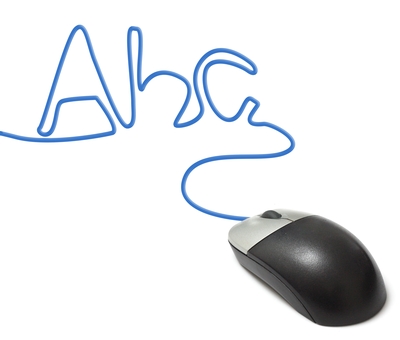 If you’re writing or editing copy destined for the web, know this: People don’t read. They don’t even finish what they’re not reading. Instead, they scan for answers and, with any luck, take action based on what they find. It’s less about the journey, more about the destination.
If you’re writing or editing copy destined for the web, know this: People don’t read. They don’t even finish what they’re not reading. Instead, they scan for answers and, with any luck, take action based on what they find. It’s less about the journey, more about the destination.
Your mission, then, is to pave and mark the way so users reach that destination quickly and effortlessly. Here are a few basics to get you started.
Keep text short and scannable.
Long, text-heavy web pages put people off, so be judicious with length. Usability legend Jakob Nielsen advises half the word count of conventional writing. Use short paragraphs, too, with one main idea in each.
In scanning, readers look for textual signposts. To facilitate their navigation, make sure subheads and links are informative (versus clever) and calls to action crystal-clear. Elements like bulleted lists and images or videos with captions also help readers. We’re talking the unfortunately named “chunking.” Here are more tips for chunking web content.
Be clear and relevant.
Rambling or overly promotional copy gives users another reason to abort. Use active language and get to the point. In consideration of non-native readers, minimize colloquialisms and jargon. For example, I was recently cautioned not to use “wicked” (the good wicked) because English was a second language for many in the audience, and Google Translate only goes so far.
Guess what else helps with clarity and scannability? You’re not going to like this. The Nielsen school recommends that you break grammar rules. Like, really break them.
Make every word count.
Which is more informative?
“To purchase this product, click here.” or “Buy it now.”
Exactly. Every button, label and call to action is an opportunity to add meaning. “Click here” squanders a key call to action and is poor form in general. Never ever use “Click here.” Guesswork should never ever be part of the user experience.
For more on this, check out John Zeratsky’s Fast Company article on great interface copy.
Don’t test users’ patience.
People are impatient on the web. If they have to work too hard, you risk losing them. For instance, ensure a link sends users straight to the information they’ve been promised, not on a milk run requiring several clicks before they find what they’re looking for.
Or if a password must include one capital letter, one numeral and the name of a ’90s boy band, tell users up front, not in the error alert after the fact. You’ve convinced them to hand over their information; don’t jeopardize that goodwill so quickly. These examples of brilliant micro-copy demonstrate how effective even small pieces of copy can be.
I leave you with a couple of good all-purpose articles:
11 Steps to Effective Website Copywriting
Six Tips on Writing Copy for the Web and Social Media
Read/scan to your heart’s content.
Previous post: Lessons Learned From Eminem, David Ogilvy and a Sex Hotline
The Editors’ Weekly is the official blog of Editors Canada. Contact us.
Discover more from The Editors' Weekly
Subscribe to get the latest posts sent to your email.
